Using MinIO to upload to a local S3 bucket in Django
So MinIO its an object storage that uses the same API as S3, which means that we can use the same S3 compatible libraries in Python, like Boto3 and django-storages.
The setup
Here’s the docker-compose configuration for my django app:
version: "3"
services:
app:
build:
context: .
volumes:
- ./app:/app
ports:
- 8000:8000
depends_on:
- minio
command: >
sh -c "python manage.py migrate &&
python manage.py runserver 0.0.0.0:8000"
minio:
image: minio/minio
ports:
- 9000:9000
environment:
- MINIO_ACCESS_KEY=access-key
- MINIO_SECRET_KEY=secret-key
command: server /export
createbuckets:
image: minio/mc
depends_on:
- minio
entrypoint: >
/bin/sh -c "
apk add nc &&
while ! nc -z minio 9000; do echo 'Wait minio to startup...' && sleep 0.1; done; sleep 5 &&
/usr/bin/mc config host add myminio http://minio:9000 access-key secret-key;
/usr/bin/mc mb myminio/my-local-bucket;
/usr/bin/mc policy download myminio/my-local-bucket;
exit 0;
"
appis my Django app. Nothing new here.miniois the MinIO instance.createbucketsis a quick instance that creates a new bucket on startup, that way we don’t need to create the bucket manually.
On my app, in settings.py:
# S3 configuration
DEFAULT_FILE_STORAGE = "storages.backends.s3boto3.S3Boto3Storage"
AWS_ACCESS_KEY_ID = os.environ.get("AWS_ACCESS_KEY_ID", "access-key")
AWS_SECRET_ACCESS_KEY = os.environ.get("AWS_SECRET_ACCESS_KEY", "secret-key")
AWS_STORAGE_BUCKET_NAME = os.environ.get("AWS_STORAGE_BUCKET_NAME", "my-local-bucket")
if DEBUG:
AWS_S3_ENDPOINT_URL = "http://minio:9000"
If we were in a production environment, the AWS_ACCESS_KEY_ID,
AWS_SECRET_ACCESS_KEY and AWS_STORAGE_BUCKET_NAME would be read from the
environmental variables, but since we haven’t set those up and we have
DEBUG=True, we are going to use the default ones, which point directly to
MinIO.
And that’s it! That’s everything you need to have your local S3 development environment.
Testing
First, let’s create our model. This is a simple mock model for testing purposes:
from django.db import models
class Person(models.Model):
"""This is a demo person model"""
first_name = models.CharField(max_length=50)
last_name = models.CharField(max_length=50)
date_of_birth = models.DateField()
picture = models.ImageField()
def __str__(self):
return f"{self.first_name} {self.last_name} {str(self.date_of_birth)}"
Then, in the Django admin we can interact with our new model:
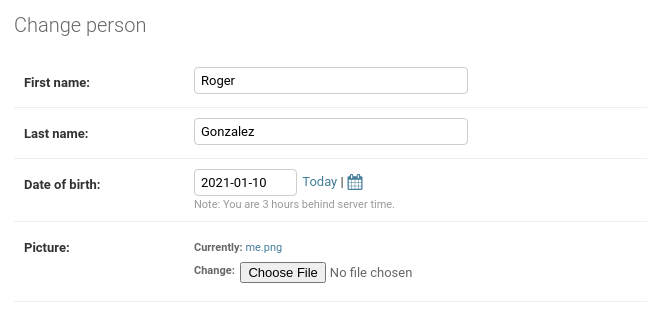
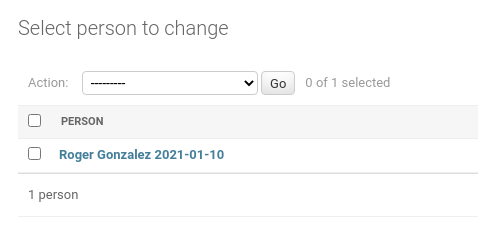
If we go to the URL and change the domain to localhost, we should be able to
see the picture we uploaded.
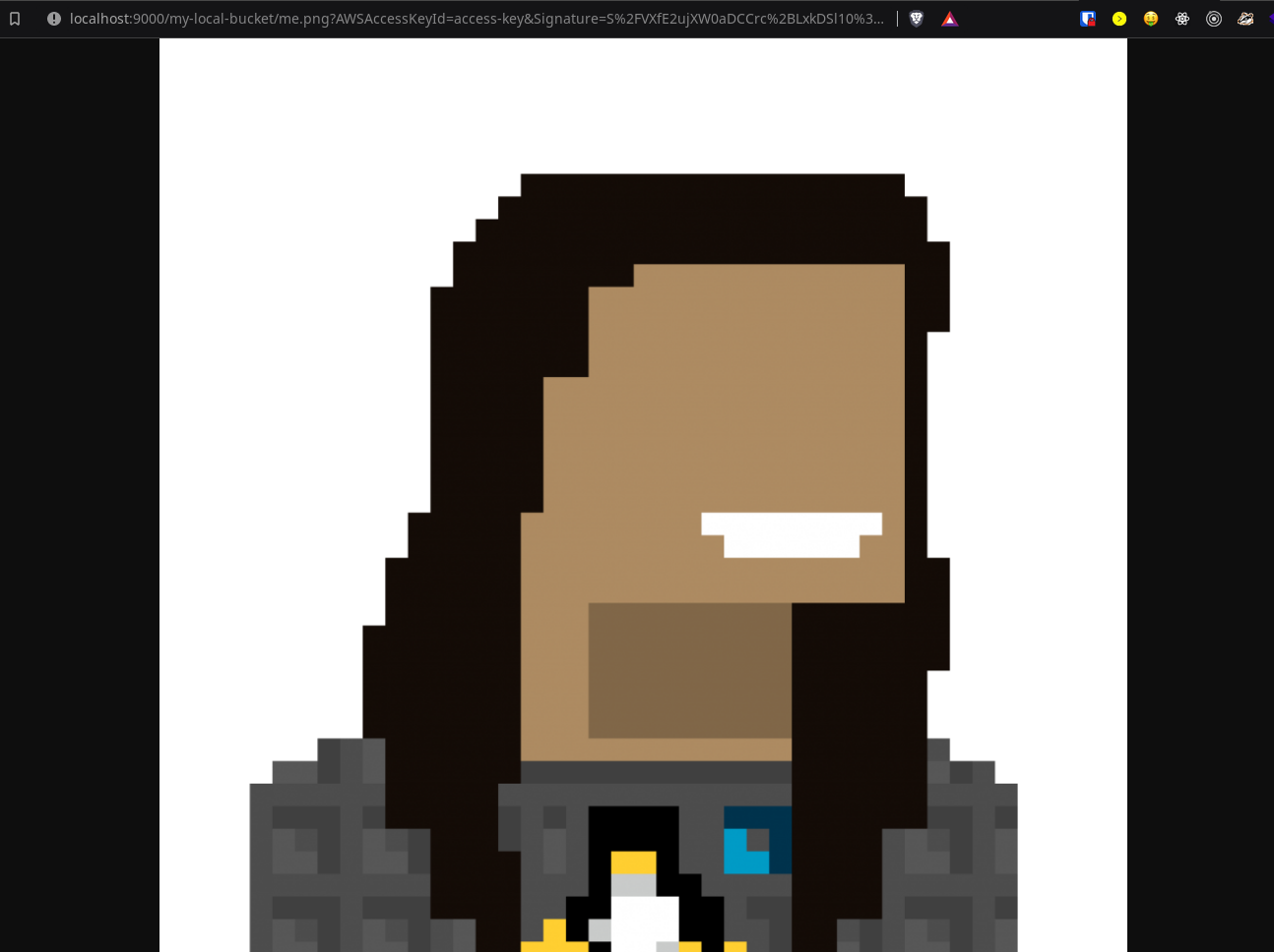
Bonus: The MinIO browser
MinIO has a local objects browser. If you want to check it out you just need to go to http://localhost:9000. With my docker-compose configuration, the credentials are:
username: access-key
password: secret-key
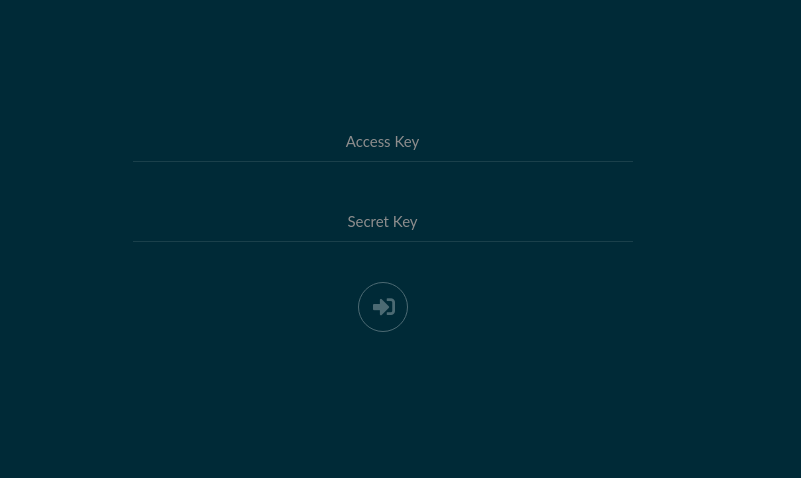
On the browser, you can see your uploads, delete them, add new ones, etc.
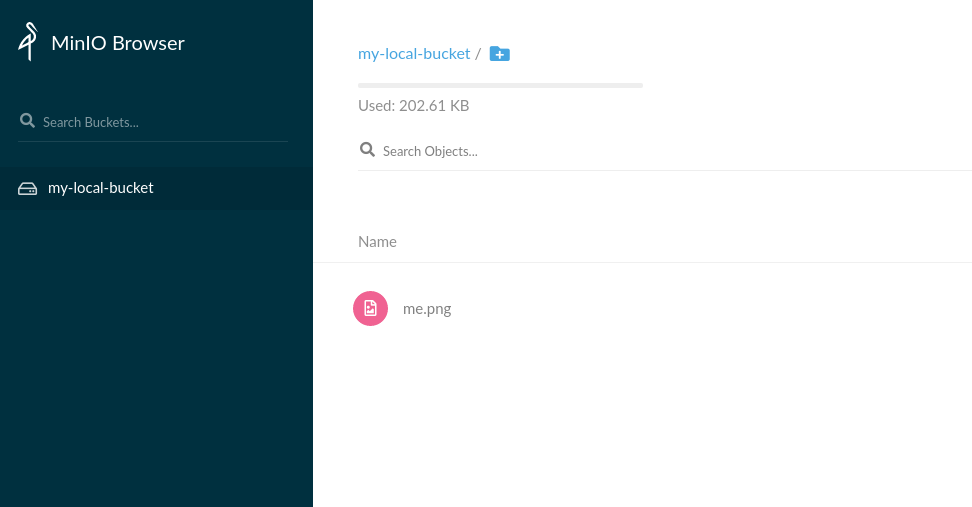
Conclusion
Now you can have a simple configuration for your local and production environments to work seamlessly, using local resources instead of remote resources that might generate costs for the development.
If you want to check out the project code, you can check in my Gitlab here: https://gitlab.com/rogs/minio-example
See you in the next one!
